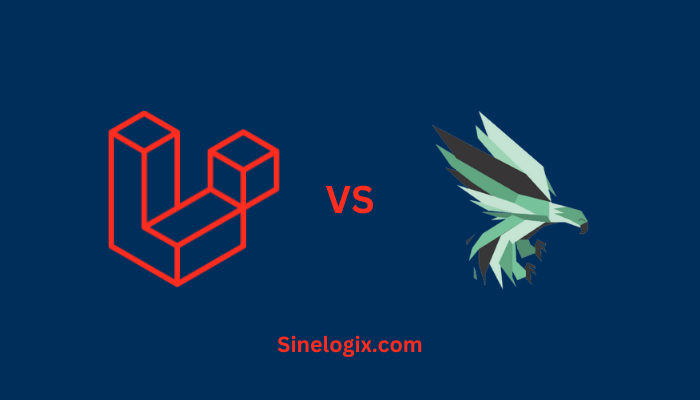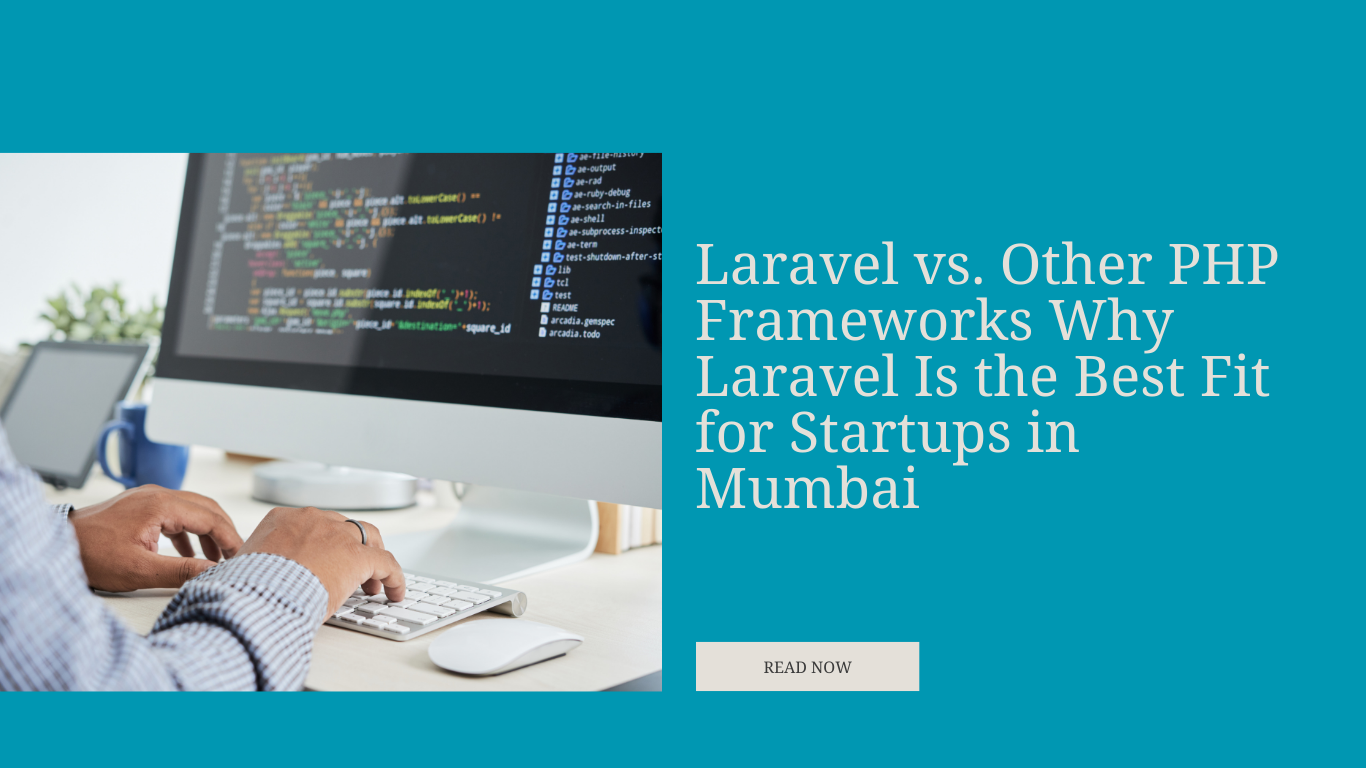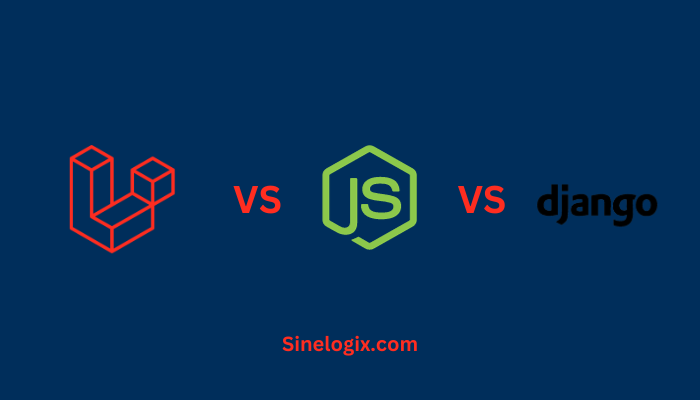In the ever-evolving landscape of web development, the choice of a backend framework is a critical decision that shapes the foundation of a digital project. Laravel, a PHP framework known for its expressive syntax and robust features, and Phalcon, a PHP extension that boasts high performance and a unique architecture, stand out as contenders in this dynamic arena.
In this article, we delve into the strengths, weaknesses, and nuances of Laravel and Phalcon, offering insights to guide developers in making informed decisions for their projects.
Overview of Laravel and Phalcon
Laravel: Laravel, written in PHP, has gained popularity for its elegant syntax, developer-friendly features, and adherence to the MVC (Model-View-Controller) architecture. It provides a comprehensive ecosystem, including the Eloquent ORM for database operations and the Blade templating engine for dynamic views. Laravel’s focus on convention over configuration streamlines development, making it a go-to choice for building scalable and feature-rich web applications.
Phalcon: Phalcon takes a unique approach by being a PHP extension written in C, delivering high performance by bypassing the typical PHP runtime. Its architecture is based on a C-extension that is loaded as a PHP module, offering a lower-level, optimized execution. Phalcon embraces a loosely-coupled architecture, allowing developers to use specific components independently, making it a lightweight yet powerful choice for certain projects.
Language and Ecosystem
Laravel: Built on PHP, Laravel leverages the widely-used server-side scripting language known for its simplicity and versatility. Laravel’s ecosystem includes Composer for package management, making it easy for developers to integrate third-party libraries and tools seamlessly.
Phalcon: Phalcon is unique in that it’s a PHP extension written in C. This design choice contributes to its high performance by reducing the overhead associated with interpreting PHP code at runtime. While its ecosystem may not be as extensive as Laravel’s, Phalcon provides the essential tools and components needed for web development.
Architecture and Design Philosophy
Laravel: Following the MVC architecture, Laravel promotes a clean separation of concerns. Its opinionated structure streamlines development, making it suitable for developers who appreciate convention over configuration. Laravel’s design philosophy prioritizes developer happiness, code readability, and maintainability.
Phalcon: Phalcon’s architecture stands out due to its C-extension nature, providing a performance boost compared to traditional PHP frameworks. It embraces a loosely-coupled design, allowing developers to use components independently. Phalcon’s lightweight nature makes it suitable for projects where performance is a critical factor.
Learning Curve and Documentation
Laravel: Laravel’s learning curve is considered moderate, especially for developers already familiar with PHP. The framework’s documentation is extensive, offering clear guides, API references, and tutorials. Laravel’s community-driven resources, such as Laracasts, enhance the learning experience.
Phalcon: Phalcon’s learning curve can be steeper due to its unique architecture and the need for developers to understand both PHP and C. While the documentation is comprehensive, the specialized nature of Phalcon might require additional effort for developers to become proficient.
Community and Support
Laravel: Boasting a vibrant and engaged community, Laravel offers valuable resources like Laracasts, Laravel News, and official forums. This active community contributes to the growth and enhancement of the framework. Laravel’s popularity ensures a wealth of online tutorials, blog posts, and third-party packages.
Phalcon: Phalcon has a smaller community compared to Laravel, given its specialized nature. However, it has a dedicated user base and forums where developers can seek support. The community-driven effort contributes to the continuous improvement of Phalcon, and its niche appeal makes it a preferred choice for certain projects.
Performance and Scalability
Laravel: Laravel provides good performance and scalability through features like caching, queuing, and optimized database queries. While it may not match the raw performance of Phalcon, Laravel’s focus on developer productivity and feature richness makes it a balanced choice for a wide range of projects.
Phalcon: Phalcon excels in terms of performance due to its C-extension nature, providing a speed advantage over interpreted PHP frameworks. This makes Phalcon particularly suitable for projects with high-performance requirements, such as APIs and microservices.
Extensibility and Customization
Laravel: Laravel encourages extensibility through Composer packages, allowing developers to integrate third-party libraries and tools into their applications. Its modular structure and artisan command-line tool simplify customization, enabling developers to tailor the framework to meet specific project needs.
Phalcon: Phalcon’s loosely-coupled architecture allows for high extensibility and customization. Developers can use specific components independently, giving them the flexibility to choose and integrate only the parts needed for a particular project. Phalcon’s lightweight design makes it well-suited for projects where customization is a priority.
Testing and Quality Assurance
Laravel: Laravel places a strong emphasis on testing with PHPUnit, providing a robust testing environment out of the box. Developers can conduct various types of tests, including unit tests, feature tests, and integration tests seamlessly. Laravel Dusk, a testing tool, facilitates browser automation testing, ensuring comprehensive coverage for web applications. The framework’s commitment to testing contributes to the overall quality and stability of Laravel applications.
Phalcon: Phalcon’s testing capabilities often rely on standard PHP testing libraries, such as PHPUnit. While it doesn’t provide a dedicated testing tool like Laravel Dusk, developers can integrate existing PHP testing tools into Phalcon projects. The flexibility allows for a tailored testing approach, although it may require additional configuration.
Development Speed and Prototyping
Laravel: Laravel’s elegant syntax and built-in features like Eloquent ORM and Blade templating engine contribute to rapid development. Laravel Spark, a package for SaaS application scaffolding, accelerates the creation of subscription-based web applications. The framework’s focus on developer-friendly syntax and conventions aids in quick prototyping, making it ideal for startups and projects with tight deadlines.
Phalcon: Phalcon’s unique architecture, being a C-extension, enables high performance, but it may require additional setup and configuration. While not as feature-rich in terms of scaffolding tools as Laravel, Phalcon provides a solid foundation for rapid development. Its lightweight nature allows for quick prototyping, especially in scenarios where raw performance is a priority.
Mobile App Development
Laravel: While Laravel is primarily a backend framework, it can be used in conjunction with technologies like Laravel Nova or API resources to serve as the backend for mobile applications. Laravel’s API-centric approach facilitates the development of robust and secure APIs, making it a viable choice for projects involving mobile app integration.
Phalcon: Similar to Laravel, Phalcon can be utilized in the backend of mobile applications, especially when building APIs for mobile app communication. Its high performance and lightweight nature make it suitable for projects with performance-critical requirements. When paired with frontend frameworks like React Native or Flutter, Phalcon contributes to building comprehensive mobile app solutions.
Community Trends and Future Outlook
Laravel: The Laravel community is dynamic, and the framework continues to evolve with frequent updates and new features. Laravel Vapor, a serverless deployment platform, reflects the community’s commitment to embracing modern cloud-native technologies. This adaptability ensures that Laravel remains relevant in the ever-changing landscape of web development.
Phalcon: Phalcon has a dedicated user base, and its development is driven by a community that values its unique architecture and high performance. While it may not have the same extensive ecosystem as Laravel, Phalcon’s focus on raw performance positions it as a compelling choice for specific projects. The community’s dedication to maintaining and improving Phalcon ensures its continued relevance.
Server Resource Utilization
Laravel: Being an interpreted PHP framework, Laravel typically requires more server resources compared to frameworks written in lower-level languages. However, the ease of use, extensive feature set, and developer-friendly environment can justify the resource overhead in many scenarios.
Phalcon: Phalcon’s C-extension nature allows it to achieve high performance with lower server resource utilization compared to traditional PHP frameworks. The reduced overhead in interpreting PHP code contributes to faster response times and efficient resource usage, making Phalcon a suitable choice for projects with a focus on optimization.
Ecosystem and Third-Party Integrations
Laravel: Laravel’s ecosystem is rich and diverse, with a wide array of third-party packages available through Composer. Laravel Forge simplifies server provisioning and deployment, while tools like Laravel Mix streamline asset compilation. The availability of packages and integrations enhances the development workflow and supports a variety of use cases.
Phalcon: While Phalcon’s ecosystem may not be as extensive as Laravel’s, it provides essential tools and components needed for web development. Phalcon’s loosely-coupled nature allows developers to integrate third-party libraries seamlessly. However, the community-driven ecosystem is smaller, and developers may need to implement custom solutions for specific requirements.
Middleware and Request Handling
Laravel: Laravel’s middleware system provides a flexible mechanism to filter HTTP requests entering the application. Developers can use middleware to perform tasks like authentication, logging, and modifying incoming requests. This feature enhances the framework’s ability to handle various aspects of request processing, ensuring clean and organized code flow.
Phalcon: Phalcon also incorporates a middleware system for handling HTTP requests. Its implementation is designed to leverage the efficiency of the C-extension architecture, contributing to faster request handling. Developers can implement middleware to intercept and modify requests before they reach the application’s core logic. Phalcon’s approach to middleware aligns with its emphasis on performance.
Database Integration and ORM
Laravel: Laravel’s Eloquent ORM simplifies database operations by providing an elegant, ActiveRecord implementation. Eloquent allows developers to interact with databases using expressive syntax, making it easy to perform common tasks like querying, inserting, and updating records. Laravel’s database migration system further streamlines database schema management.
Phalcon: Phalcon’s ORM, called Phalcon\Mvc\Model, also facilitates database interactions in an object-oriented manner. It is designed to be lightweight and performant, aligning with Phalcon’s overarching goal. While not as feature-rich as Laravel’s Eloquent, Phalcon’s ORM provides essential functionality for building database-driven applications.
Template Engine
Laravel: Laravel employs the Blade templating engine, known for its simplicity and readability. Blade templates use plain PHP code, making it easy for developers to write and understand. Blade supports template inheritance, allowing for the creation of modular and reusable views. Laravel’s approach to templating contributes to the framework’s focus on clean and maintainable code.
Phalcon: Phalcon utilizes the Volt templating engine, designed for efficiency and performance. Volt introduces features like auto-escaping, template inheritance, and macros. While similar in purpose to Blade, Volt’s syntax and feature set are distinct. Developers familiar with the template engine can leverage its capabilities for creating dynamic views in Phalcon applications.
Community Trends and Adoption
Laravel: Laravel has witnessed significant growth in its community and adoption rates. Its popularity is evident in the large number of projects, packages, and tutorials created by the community. The Laravel community actively contributes to the framework’s development, ensuring a steady stream of updates, improvements, and innovative features.
Phalcon: Phalcon, while not as widely adopted as Laravel, has a dedicated user base that appreciates its unique architecture and performance benefits. The community-driven development ensures that Phalcon continues to receive support and updates. Its niche appeal attracts developers seeking a balance between performance and a PHP-based framework.
Containerization and Microservices
Laravel: Laravel applications can be containerized using tools like Docker, allowing for seamless deployment and scalability. Laravel’s modular structure and support for microservices architectures make it suitable for building distributed systems. Laravel Horizon, a dashboard and queue manager, aids in managing scalable Laravel applications efficiently.
Phalcon: Phalcon’s lightweight nature and performance advantages make it well-suited for microservices architectures. Developers can containerize Phalcon applications to achieve efficient deployment and scaling. Phalcon’s C-extension architecture aligns with the resource-efficient requirements often associated with microservices.
Internationalization and Localization
Laravel: Laravel provides robust support for internationalization and localization. Developers can easily manage language files, translate content, and adapt the application to different locales. Laravel’s localization capabilities contribute to building globally accessible web applications, a crucial aspect for projects targeting diverse audiences.
Phalcon: Phalcon also supports internationalization and localization through its translation features. Developers can manage translations to provide multilingual support in Phalcon applications. While not as feature-rich as Laravel in this aspect, Phalcon’s localization capabilities cater to projects with global audiences.
User Authentication and Authorization
Laravel: Laravel simplifies user authentication and authorization through the built-in Laravel Passport and Laravel Sanctum packages. These packages provide convenient solutions for API authentication and token management. Laravel’s focus on security features ensures a robust foundation for implementing user authentication and access control.
Phalcon: Phalcon offers user authentication features that developers can leverage to implement secure login and registration processes. While not as extensive as Laravel’s Passport and Sanctum, Phalcon’s authentication capabilities provide the essential functionality needed for securing web applications.
SEO-Friendly Routing and URLs
Laravel: Laravel’s routing system allows developers to create clean, SEO-friendly URLs. The framework’s expressive routing syntax and the ability to define named routes contribute to building URLs that are both human-readable and optimized for search engines. Laravel’s approach to routing enhances the overall SEO performance of applications.
Phalcon: Phalcon’s routing system also supports the creation of SEO-friendly URLs. Developers can define routes in a way that aligns with best practices for search engine optimization. While not as feature-rich as Laravel’s routing, Phalcon provides the necessary tools for crafting clean and user-friendly URLs.
Related Articles:
Conclusion
The comparison between Laravel and Phalcon encompasses various aspects, ranging from middleware and templating engines to community trends and SEO-friendly routing. Each framework brings its unique strengths to the table, catering to different preferences and project requirements.
Laravel, with its expressive syntax, comprehensive ecosystem, and strong community support, excels in scenarios where developer productivity and feature richness are paramount. Phalcon, with its unique C-extension architecture and focus on raw performance, stands out for projects that demand high-speed execution and efficient resource utilization.
Developers must carefully weigh these aspects based on the specific goals and characteristics of their projects. Whether opting for Laravel’s elegant syntax or Phalcon’s performance benefits, both frameworks contribute to the diverse and evolving landscape of PHP web development.




